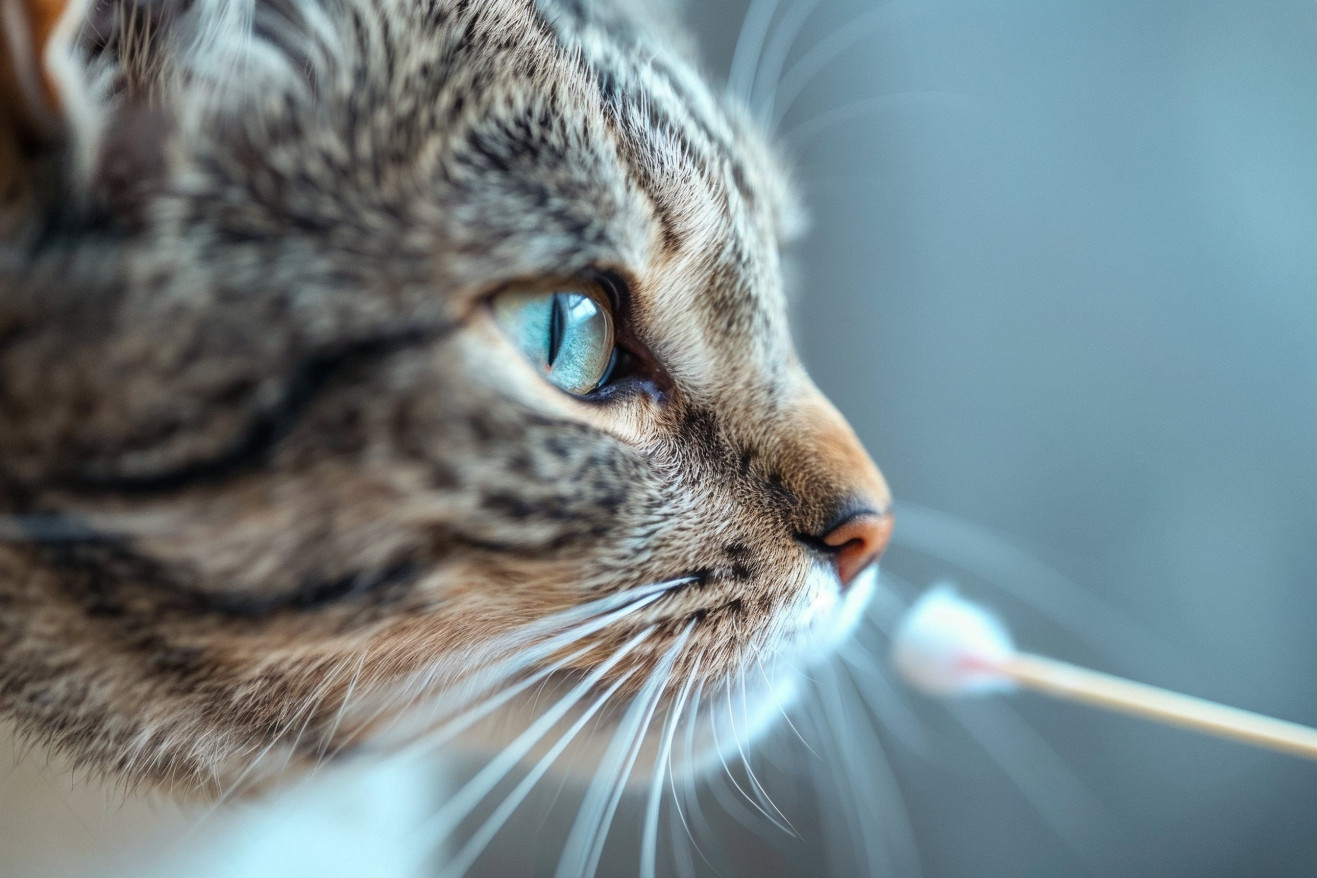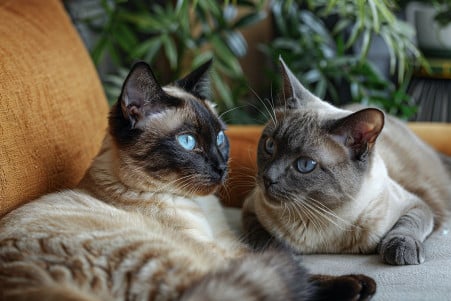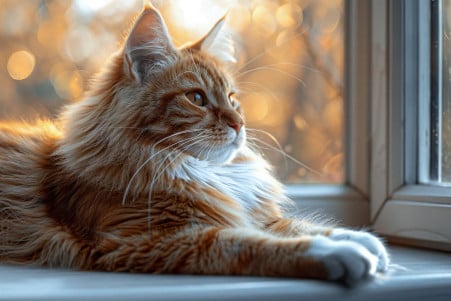Why Do Cats Like Earwax? Exploring the Feline Fascination
7 March 2024 • Updated 7 March 2024

Cats are known for their strange habits, but one of the most perplexing is their apparent love of earwax. It turns out that cats may be attracted to the protein in earwax because it smells like the meat they eat. Earwax has organic compounds that produce a scent similar to essential animal proteins, which can be appealing to a cat’s sensitive nose and natural dietary needs.
To get to the bottom of this mystery, we will look at research from veterinary science, animal behavior, and chemistry. We will examine studies of cats’ sensory likes and dislikes, break down the nutritional makeup of earwax, and explore certain behaviors that may be behind this interest. By combining information from these fields, we hope to come to a better understanding of why cats might like earwax.
Why do cats like earwax?
Understanding the Cat Palate: Taste and Smell Preferences
Cats have a palate that is highly attuned to their carnivorous diet. One of the most interesting differences between the human and feline palate is that cats don’t have a sweet taste receptor.
A study published in PMC shows that cats have a preference for amino acids and proteins over carbohydrates and sugars, which makes sense given that they are obligate carnivores. Cats on Broadway Veterinary Hospital confirms that cats have taste receptors for all other flavors except sweet.
Jacobson’s organ is a key part of the feline olfactory system, enabling them to “taste-smell” odors. Cats on Broadway Veterinary Hospital speculates that Jacobson’s organ may be involved in cats’ strange attraction to earwax. The odor of earwax may be similar to the scent of certain proteins and amino acids, which could pique a cat’s interest and lead them to taste-smell it.
Hill’s Pet notes that cats may be attracted to earwax because of its odor, which may be a sign that it contains the nutrients they need since they have a limited sense of taste and rely heavily on smell. This sensory-based attraction is consistent with their natural preference for a diet high in protein, leading us to wonder if earwax may have some nutritional value for cats.
The Nutritional Composition of Earwax and Why Cats Are Attracted to It
Human earwax, or cerumen, is made up of a variety of lipids, proteins, and fatty acids, all of which are essential dietary components for cats.
A paper in PMC by Engy Shokry explains that cerumen is made up of a combination of long chain hydrocarbons, squalene, and cholesterol, which is consistent with the nutritional composition of animal proteins.
These components are part of the metabolic pathway that cats use to maintain their energy and overall well-being. This nutritional makeup may be why cats find earwax so appealing, as it contains the proteins and fatty acids that are often found in their natural diet.
E. Haahti’s study in the Scandinavian Journal of Clinical and Laboratory Investigation explains that these nutritional components are present in earwax and goes into detail about the fatty acid composition of earwax.
The fatty acids that are present may be similar to the fatty acids that cats are instinctively drawn to in their diet. The fatty acid composition of earwax is similar to that of animal proteins, which may stimulate a cat’s attraction to earwax, suggesting that earwax may inadvertently satisfy a cat’s natural desire for these nutrients.
Knowing the chemical and lipid composition of earwax helps to explain why cats may be attracted to it and links the behavior to a natural dietary need.
Pica in Cats: What Does It Mean When Your Cat Eats Earwax?
Pica in cats is a condition in which cats eat non-nutritive substances, which can include everything from earwax to plastic and cloth. Pica can be caused by dietary deficiencies and environmental stressors, including changes in the home. A study published in PMC even found that moving to a new house, renting, and not having other pets in the home were all factors that contributed to chronic pica in cats.
If a cat suddenly starts showing an interest in earwax, it could be a sign of pica, especially if the cat is drawn to the earwax because of its texture or smell, which could make it seem like a food source. Both owner-reported cases and a study published in PMC have shown that pica in cats can lead to medical and behavioral problems, including gastrointestinal issues and compulsive disorders.
Pica in cats can be treated by making sure the cat has a stable, stimulating environment and is eating a nutritionally complete diet. In some cases, behavioral modification or medical treatment may be needed to prevent the cat from eating potentially toxic substances.
Learning about pica in cats shows that when a cat eats non-food items like earwax, it can be a sign of a behavioral or medical issue that needs to be addressed, and cat owners need to be vigilant and responsive to their cat’s needs.
The Science Behind Cat Saliva and Earwax
The molecular composition of cat saliva may offer some insight into the strange relationship between cat saliva and earwax. While there isn’t a lot of research specifically on this topic, some studies have delved into the components of cat saliva.
For example, one study published on PubMed found that proteins in a certain molecular weight range are responsible for concentrating the allergenic activity in cat saliva. These proteins could potentially interact with the complex compounds in earwax, leading to a chemical attraction or even a nutritional benefit for the cat.
Another study published on ScienceDirect found that cat saliva contains higher levels of certain pro-inflammatory cytokines and chemokines. Although these molecules are known to cause inflammation, they could also play a role in how cats sense or process earwax, making it more appealing.
In a larger context, it’s also important to consider the role of cat saliva in grooming. Cats groom themselves constantly, and their saliva comes into contact with a variety of substances, including earwax. The unique composition of cat saliva, including any potential enzymatic properties, may also help explain why cats are drawn to human earwax.
The Complex World of Cat Communication: Scent, Secretions, and Social Signals
Yet cats’ sense of smell and taste isn’t just about their preferences for certain scents and flavors; it’s also a key part of how they communicate. Just as cats are attracted to the scent of human earwax, they are also attracted to a range of human smells and secretions.
According to Newsweek, a combination of volatile organic compounds is responsible for cats’ scent-marking, and a study in Scientific Reports even suggests that the bacteria in cats’ anal glands contribute to their individual scents. This means that cats both communicate with and are attracted to a variety of smells.
This interest in smells may have an evolutionary basis, helping cats mark their territory, find mates, and recognize other members of their species. A study reported by Phys.org even found that the bacterial families in cats’ anal glands play a major role in creating these smells. The research showed that a cat’s microbiome, which can be influenced by diet, health, and living conditions, can impact the smells they produce and respond to.
This understanding of the role of the microbiome in scent production may help explain why cats are interested in human earwax. It’s possible that the secretions contain a scent that is unique to the individual that cats can pick up on, possibly even containing microbial elements that are similar to those used in their own scent-based communications.
Decoding the Mysteries of Earwax: A Review of the Science of Cats and Earwax
We have now traveled through a variety of explanations for why cats are attracted to earwax, including the science of taste and smell, the science of nutrition, the science of behavior, and the science of microbiology.
From the lack of sweet taste and smell receptors in cats to the nutritional benefits of the fatty acids and proteins in earwax and the mystery of pica—each of these explanations has contributed to a more complete picture of why cats are drawn to earwax.
This exploration has also shown how complicated it is to understand why cats do what they do and how important it is to take an interdisciplinary approach to studying this and other questions about cat behavior. Not only do the chemical makeup of earwax and the contents of cat saliva make the consumption of earwax interesting to cats, but so do their highly developed senses and natural behaviors.
In the end, we can see that cats are complex animals whose behaviors are the result of many factors, and their attraction to earwax is just one example of this. For cat owners, this means there is always more to observe and learn about the animals we love and share our lives with. With each new discovery, we not only learn more about our cats but also strengthen our relationships with them.


